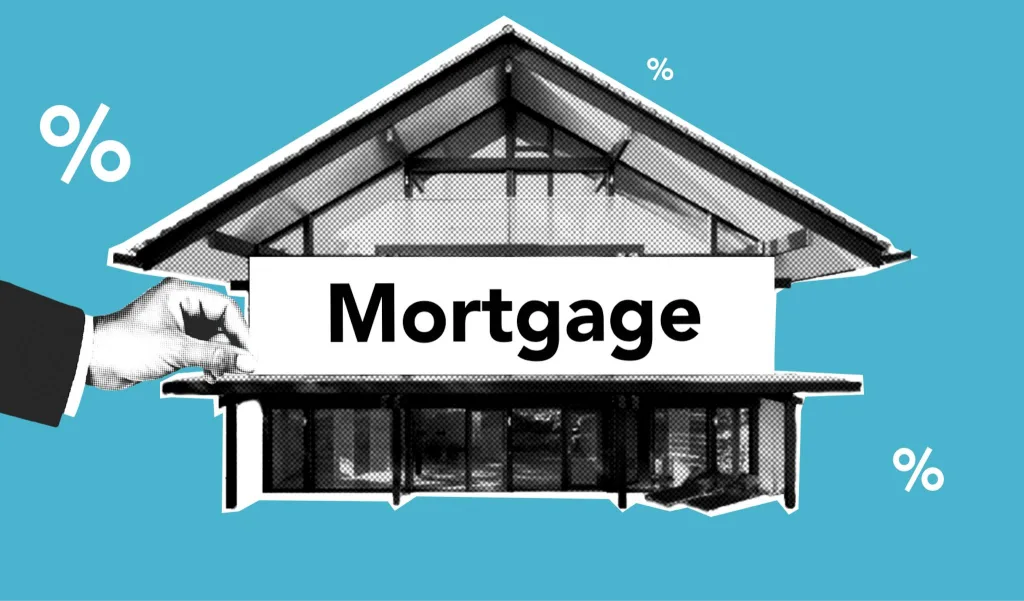Tiny Homes offers a unique and affordable housing solution, but securing financing can be a challenge. After all, they are just small homes, right?
Lenders are finally figuring out how to offer financing options for your tiny home.
In this guide, we’ll cover the key options for financing your tiny house on a permanent foundation. From conventional mortgages to alternative loans, we’ve got you covered.
Let’s get exploring.
Disclosure: This post may contain affiliate links, meaning I can earn commissions. If you decide to purchase through my links, it is at no cost to you.
What is a Tiny Home on a Permanent Foundation?
If your tiny home is on a slab or piers, it could be considered on a foundation. It cannot be on wheels or movable. It may be located in a tiny home community on a rental lot also.
Some requirements could be related to the building materials used or the code/standards the structure follows.
Most lenders require a home to meet the Department of Housing and Urban Development (HUD) guidelines.
Clarity on these will be important to determine what type of financing you can obtain.
Before we go through the financing options, note if your tiny home will be used as an ADU (Accessory Dwelling Unit), there could be additional ADU financing options to explore.
What are Financing Options for Your Tiny Home on a Permanent Foundation
Conventional Mortgage Loans for Tiny Homes
Conventional mortgage loans are a popular option for financing a tiny home.
Traditional banks, credit unions, and mortgage lenders offer these loans.

To qualify for a conventional mortgage, borrowers typically need a credit score ranging from 620 to 640, depending on the lender’s requirements. Of course, the higher your credit score the better your interest rate could be.
One advantage of conventional mortgage loans is the longer repayment terms, which can extend up to 30 years.
This longer repayment period can result in lower monthly payments, making it easier for borrowers to manage their finances.
Conventional mortgage loans often have lower interest rates but may require a larger down payment, sometimes up to 20%.
There could be special programs that would reduce the typical 20% down payment.

FHA Loans for Tiny Houses on Permanent Foundations
The Federal Housing Administration (FHA) offers loans specifically designed for borrowers with lower credit scores or limited down payment funds.
FHA loans for tiny homes have a minimum credit score requirement of 580, making them more accessible to a wider range of borrowers.
One of the most significant benefits of FHA loans is the smaller down payment option. Borrowers could qualify for a down payment as low as 3.5%.
To qualify for an FHA loan, the tiny home must meet the HUD guidelines.

VA Loans for Qualifying Veterans and Active-Duty Military
Veterans and active-duty military members may be eligible for VA loans, which are backed by the U.S. Department of Veterans Affairs.

VA loans do not have a minimum credit score requirement set by the VA itself, but individual lenders may have their own criteria for approving these loans.
One of the most significant advantages of VA loans is the potential for zero down payment options.
Eligible borrowers may be able to finance their tiny homes without making a down payment, making homeownership more accessible.
VA loans also offer competitive interest rates, which can help borrowers save money over the life of the loan.
To qualify for a VA loan, the tiny home must meet the VA’s property requirements.
Tiny House Loans: Alternative Financing Options for Your Tiny Home
In addition to conventional mortgage loans, FHA loans, and VA loans, there are several alternative financing options available for those looking to purchase a tiny home. These options include personal loans and seller financing.
Personal Loans for Small Houses

Personal loans are unsecured loans that can be used for various purposes, including financing a tiny home.
These loans typically have shorter repayment terms, ranging from 2 to 7 years, and may have higher interest rates compared to mortgage loans.
One advantage of personal loans is that they often have more flexible credit score requirements.
Some lenders may approve personal loans for borrowers with credit scores as low as 600, making them a viable option for those with less-than-perfect credit.
Some use credit card companies, credit unions, or other financial institutions for personal loans.
Seller Financing for Tiny Houses
In some cases, the seller of a tiny home may be willing to offer financing directly to the buyer. This arrangement, known as seller financing, can be beneficial for both parties.

Seller financing can be more flexible than traditional loans, with the seller and buyer agreeing on repayment terms, interest rates, and down payment requirements.
This flexibility can make it easier for buyers to secure financing, especially if they have difficulty qualifying for traditional loans.
Finding the Best Lenders for Tiny Homes: Key Considerations
When researching potential lenders, be sure to compare the following from multiple providers:
- Rates
- Terms
- Insurance requirements
- Loan Eligibility requirements
Some lenders specialize in tiny house financing. Consider working with a financial advisor or tiny house consultant who can provide expert advice and guidance throughout the financing process.
These professionals can help you assess your financial situation, create a realistic budget, and identify the most appropriate financing options for your unique circumstances.
Researching Lender Reputation and Experience
When searching for the best lender to finance your tiny home, look for those with a proven track record.
Financing a tiny house can be more challenging than securing a traditional mortgage, as many lenders may not have experience with this unique type of property.
Start by reading reviews and testimonials from previous borrowers who have financed their tiny homes through specific lenders. This can provide valuable insights into the level of customer satisfaction, responsiveness, and overall experience working with the lender.
Pay attention to comments about the lender’s knowledge of tiny house financing, their ability to address specific concerns and the smoothness of the application and approval process.

Comparing Loan Terms, Rates, and Fees
Once you’ve identified potential lenders with experience in tiny house financing, request quotes from multiple sources to compare their offerings.
Pay close attention to:
- interest rates
- repayment terms
- any associated fees.
Interest rates can vary significantly between lenders, and even a small difference can have a substantial impact on your total cost over the life of the loan.
Look for lenders offering competitive rates based on your credit score and financial situation.
Evaluating Repayment Terms and Fees
Repayment terms for tiny house loans can range from a few years to several decades, depending on the lender and the loan amount.
Consider your budget and long-term financial goals when evaluating repayment terms. Longer terms may result in lower monthly payments but will also mean paying more in interest over time.
Be aware of additional costs, such as:
- origination fees
- prepayment penalties
- closing costs.
Definitions
Origination fees are upfront charges for processing the loan
Prepayment penalties may apply if you pay off the loan earlier than agreed.
Closing costs can include appraisal fees, title insurance, and other expenses related to finalizing the loan.
To better understand the impact of different loan terms and rates, use online loan calculators to estimate your monthly payments and the total interest paid over the life of the loan.
This can help you make an informed decision when comparing lenders and their offerings.
Improving Your Chances of Approval for Tiny Home Loan
To increase your chances of approval and secure better interest rates, consider the following:
- Improve your credit score by paying bills on time, reducing debt, and correcting errors on your credit report.
- Provide proof of stable income and employment history to demonstrate your ability to repay the loan.
- Shop around and compare offers from multiple lenders to find the best rates and terms for your situation.
Assessing Eligibility Requirements and Application Process
Before applying for a tiny house loan, review each lender’s eligibility requirements to ensure you meet their criteria.
Common factors include:
- Minimum credit score
- Income stability and proof of employment
- Debt-to-income ratio
- Down payment amount
Lenders may have different requirements based on their risk assessment and underwriting policies.
Some may be more lenient with credit scores but require a higher down payment, while others may prioritize a stable income and employment history.
Gathering Necessary Documentation
To streamline the application process, gather all necessary documentation in advance.
Having these documents readily available can help expedite the application process and demonstrate your preparedness to the lender.
This typically includes:
- Proof of income (pay stubs, tax returns, W-2 forms)
- Bank statements
- Building plans and cost estimates for your tiny house project
- Documentation of your intended tiny house parking or land ownership arrangements
Completing the Financing Application for a Tiny House
When applying for a tiny house loan, it’s essential to create a compelling case for your project.
Provide a clear and detailed explanation of your tiny house plans, including the design, materials, and estimated costs.
Demonstrate your commitment to the project by highlighting any steps you’ve already taken, such as securing land or working with a tiny housebuilder.
Be prepared to explain your motivation for choosing a tiny home and how it aligns with your lifestyle and financial goals.
Lenders may be more willing to finance your project if they understand your vision and dedication to making it a reality.
Final Thoughts
Financing options for your tiny home on a permanent foundation is becoming more accessible as lenders adapt to the growing demand for alternative housing.
Whether you choose a conventional mortgage, an FHA or VA loan, or explore alternative options like personal loans or seller financing, the key is understanding your financial situation and aligning it with the right lending product.
Preparing your documents in advance and working with experienced lenders can make the process smoother.
With the right plan in place, your dream of owning a tiny home can become a reality—one small step toward big living.
Frequently Asked Questions
What’s the difference between a tiny home on wheels and one on a foundation?
A tiny home on wheels is considered a recreational vehicle (RV) and is often subject to different regulations and financing options.
Can I finance the land and the tiny home together?
Yes, many lenders allow you to finance both the land and the tiny home in a single loan, depending on the property’s location and zoning
What if my tiny home doesn’t meet HUD guidelines?
You may still qualify for alternative financing, like personal loans or seller financing, but traditional mortgage options may be limited.
How long does it take to get financing approved for a tiny home?
Approval timelines vary but can range from a few days for personal loans to several weeks for conventional mortgages.
Image Source: Canva, Pexels, Pixabay, Open Verse, Unsplash


